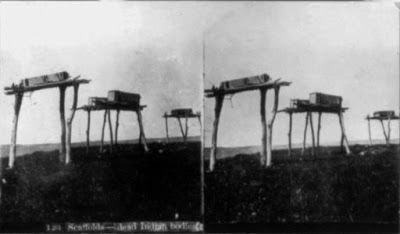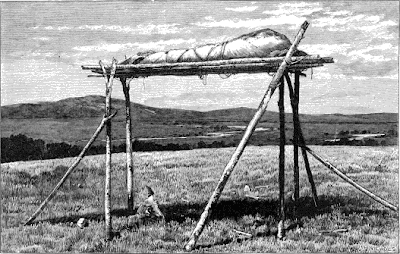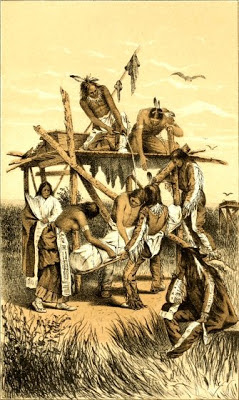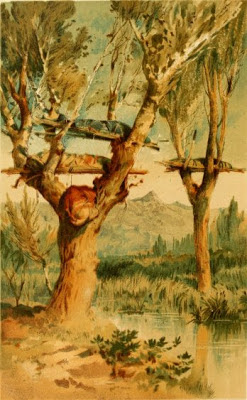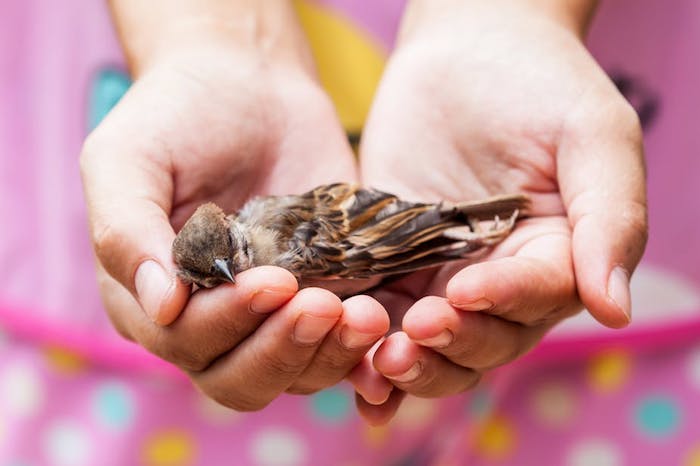
By Paula Spencer Scott,
Nothing prepares you for being present at the death of a loved one. The emotional enormity of the experience and its relative rarity give survivors little frame of reference to draw from.
“The time of life we call dying is an extremely difficult part of the life cycle, but a normal part,” says palliative-care physician Ira Byock, author of Dying Well. “The nature of it isn’t medical, it’s experiential.”
The death experience unfolds differently in each situation. But those who have witnessed “the passing” observe the following:
The dying person may talk to people not in the room, or may see other places.
“A few hours before she died, my mother suddenly said, ‘No, I’m not Sarah [her mother’s name],’ but she didn’t say it to any of us in the room. Then she was telling Dad she loved him. It was like she was having two conversations at once. One of the last coherent things that she said was, ‘Are you the gentleman who’s come to meet me?'” — Michele, a North Carolina mother of four
Dying people often seem to be in two worlds at once: here and not here. They may talk to or gesture toward people who aren’t visible to others in the room. Or they may describe things or places they see, such as a garden, a favorite location, or lights.
These “deathbed visions,” as British neuropsychiatrist Peter Fenwick, a neuropsychiatrist and specialist in near-death experiences, calls them, almost always take place when the person is clearly conscious — even though witnesses sometimes mistake the visions and speech for signs of delirium. Some dying people switch easily between conversations with those at the bedside and with someone unseen. The people and places are usually connected with feelings of peace and security. In the U.S. and the U.K., nearly three-fourths of visions are of friends and relatives who aren’t living, says Fenwick, author of The Art of Dying. About 13 percent of people seen are religious figures, compared to 50 percent of people in India who see Hindu figures. Seeing strangers is relatively rare.
Dying may seem to involve great physical effort.
“My mom had a dry mouth and scary raspy breath that worsened over a few days. But she didn’t die until the day we gave her morphine. I felt responsible, wondering if we had rushed things.” — Emma, a 45-year-old artist in San Francisco.
“Some go gently — you look up and their chest is no longer moving,” palliative-care physician Byock says. “But for others it’s hard to die. It’s like an animal shedding its skin, a physical struggle to wriggle out of this life.”
Younger people and those who are healthy aside from a single fatal illness often have the most difficult time. But dying can be effortful for anyone. Palliative care — comfort care including pain relief — improves quality of life to life’s end. Unfortunately, say hospice workers, families are often reluctant to use painkillers out of a misguided fear that they curb awareness or hasten the death process.
Morphine dosages given in hospice are only enough to ease pain, Byock says. Even with good comfort care, certain reflexive symptoms of the dying process, such as labored breathing, can still appear as distress. Mental confusion is another common effect of the organs — in this case, the brain — shutting down. (See 10 Signs Death is Near).
The personality of the dying person usually stays consistent to the end.
“My mother never lost her sense of humor. I was complaining about my brother not coming to my daughter’s birthday party. ‘So shoot him!’ she said in her typically droll way. My mother’s last words to me were instructions to kill my brother!” — Dawn Barclay, a New York manager in her 40s, who saw her mom through 18 months of complications of heart surgery and stroke
People tend to die as they lived, says Maggie Callanan, a hospice nurse and the author of Final Gifts, who has witnessed more than 2,000 deaths. “Nice people get even nicer, manipulators manipulate, funny people die funny,” she explains. “We all have ways of navigating through life, and when dying, those tendencies are intensified by 10.”
More things you may witness at a loved one’s death
The dying person may speak in metaphors.
“On the day she died, my mom kept talking about traveling, like, ‘Let’s go, what are we waiting for . . . oh, there’s a plane ahead of us . . . no, that’s not the right plane.’ She also told my dad that he should take a later flight. She was definitely going someplace.” — Patricia Anderson, 45-year-old Ohio insurance account executive
“The dying often use symbolic language, especially to indicate an imminent change or a need to go forth — to die,” says hospice nurse Callanan. Travel is one of the more common themes, such as talking about modes of transportation or about going somewhere (making a flight, a golfer talking about going golfing).
The person may also allude to “making ready” (packing, making checklists, issuing directions). Some observers think that this talk of journey-making is a subconscious way dying people let family members know they know they’re passing away. It’s a signal for families to offer reassurance — that they, too, understand what’s happening and to convey that although they’re grieving, they’ll look after one another and be all right.
“The family’s reassurances that they’ll be all right often bring the peace a dying person needs,” Callanan says.
The dying person may seem to choose the final moment.
“The hospice people had told me that sometimes people won’t die when their loved ones are in the room, especially if the person has played a protective role in their lives. Or that they hang on if they feel you can’t let them go. So before I stepped out to get something to eat, I told my Dad that if he had to go it was OK, that he had done everything he could to raise us and we could raise ourselves now. Not seven minutes later, a nurse met me in the hall and said he was gone. I guess I felt a bit cheated because I wanted to witness this crossing over.” — Lise Funderburg, Philadelphia writer
Many people report feeling “cheated” or as if they “let down” a loved one by not being there at the moment of death. Others blame themselves as “failures” for inadvertently allowing the person they love to die alone. In many cases the survivor had stayed glued to the bedside for hours, determined to be there, turning away or stepping out for only an instant.
But those who work in hospice think it’s the other way around: Passing away often happens minutes after loved ones leave the bedside, as if the dying person is choosing to spare them the final moment. This is especially true, they say, with individuals toward whom the dying person feels protective.
Also common: The dying person seems to hang on to wait for someone to visit or something to be said. One South Carolina woman’s mother lingered in hospice for months until she received the news that her also-ill, adored younger sister had died. She died herself the next morning. “It was as if she wanted to spare her sister her own news,” her daughter said.
The dying person often seems peaceful at the end.
“She opened her eyes, and the house grew quiet. Her face softened and all the wrinkles and tension went away. Later the hospice nurse recommended that I not watch them take the body out because it had stiffened, and I appreciated that because now I can remember the relaxed mother I saw last.” — Aoife, a designer from Northern California
Especially when the route has been long and marked by physical struggle, many people observe that the moments around death itself are calm. “So many people I talk to about dying tell me they wish they could die in their sleep. I’d estimate 95 percent of people dying naturally from illness go into brief coma — like a profound sleep state — before they die,” hospice nurse Callanan says. “So the good news is that most of us do die in our sleep.”
Jo Reichel, a teacher in Michigan, sat watching the Olympics with her father the morning he died after a summer full of repeat hospitalizations. “I was sitting on the floor next to his chair and kept looking between the TV and him. At 6:30 he was alive, and by 6:32, he’d simply stopped breathing. At first I wasn’t even sure I should wake my sisters to tell them, because he looked so relaxed.”
For Frances, an Ohio accountant, the moments after death were unreal but not frightening. “I’d never been in the room with a dead person before. But I had a strong sense that body wasn’t my father any more. It felt like he had up and left the room; it was terribly sad but also strangely peaceful.”
Witnessing a death is often transformative and brings survivors close.
“Seeing a person you love dying taps into the best parts of your nature.” — Lise Funderburg
Before experiencing the death of a loved one, many people view the prospect with dread. Afterward, they often look back on their death-witnessing experience as having been a horrible, grief-stricken time that nevertheless brought certain gifts. Among these: new insights into their own capacity for selfless love and caring, renewed or intensified bonds with other family members, a new respect for siblings or medical staffers, a healing of old wounds.
“The situation asked for grace, patience, and charity, so something I actually benefited from was to see I had a fairly deep capacity for those things that hadn’t been called on in the same way before,” says Funderberg, who wrote about her father’s long final illness in Pig Candy: Taking My Father South, Taking My Father Home. “Someone dying is a great prioritizer. What does something like the resentment you were holding onto matter now?”
To be sure, the passing away of a loved one can be almost unendurable. That in the end it is endurable seems to be both its blessing and its curse.
Complete Article ↪HERE↩!




